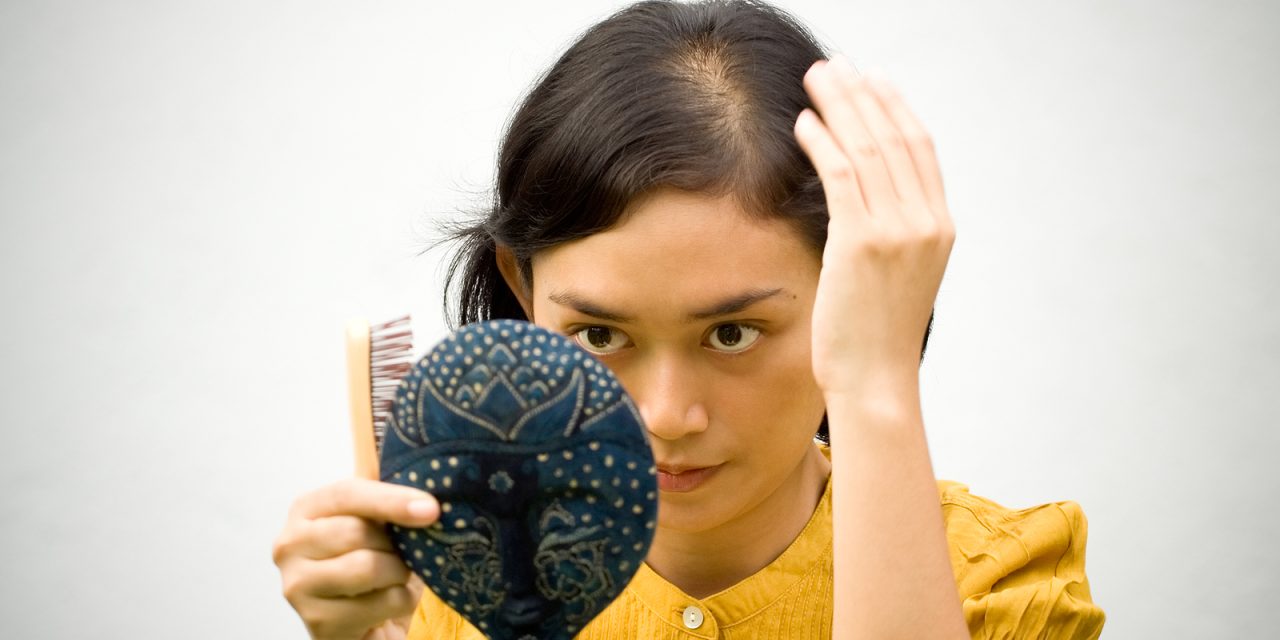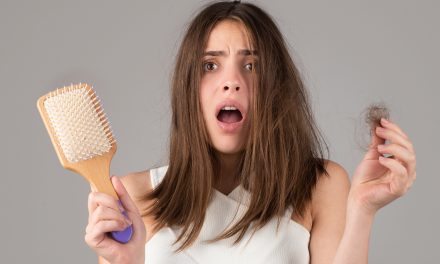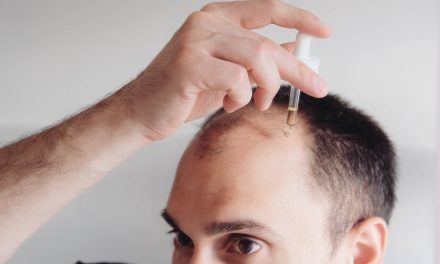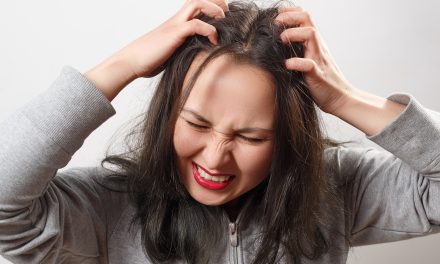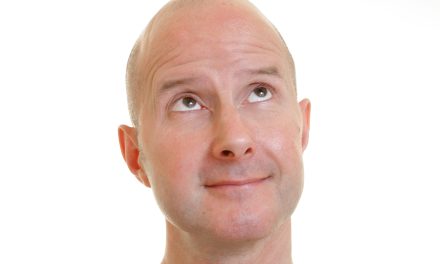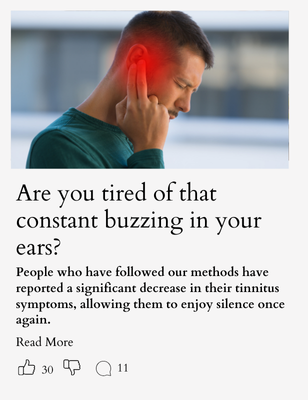Hair loss is a common concern for many people, and it’s essential to understand the difference between normal hair shedding and abnormal hair loss. On average, losing 50 to 100 strands of hair per day is considered normal, as hair goes through a natural cycle of growth, shedding, and regrowth. However, various factors such as genetics, health conditions, and even certain hairstyling practices can contribute to more significant hair loss that may require medical attention or appropriate treatment.

Early identification of abnormal hair loss patterns and understanding the potential reasons behind it can help individuals take necessary action to address the issue. Some common causes of hair loss include hormonal changes, nutritional deficiencies, and certain medications. In addition, lifestyle factors, such as stress, can also play a role in hair thinning and loss. With a range of medical treatments, alternative solutions, and supplements available today, it’s crucial to explore the most suitable options based on individual needs and the underlying cause of hair loss.
Key Takeaways
- Understanding the difference between normal and abnormal hair loss is crucial for addressing the issue.
- Various factors, including genetics, health conditions, and hairstyling practices, can contribute to hair loss.
- Identifying the cause of hair loss and exploring appropriate treatments can help individuals improve hair health and growth.
Understanding Hair Loss and Its Normalcy
Hair Growth Cycle
The hair growth cycle consists of three main stages: anagen, catagen, and telogen. The anagen phase is the active growth period, usually lasting 2 to 6 years, where hair follicles produce new hairs. During thecatagen phase, which lasts around 2 to 3 weeks, the hair follicle begins to shrink, cutting off the blood supply. The telogen phase is the resting period, after which old hairs are shed and new hairs grow from the follicle. This phase lasts around 2 to 3 months. It is important to understand that at any point, different hairs on the scalp are in various stages of the growth cycle, so shedding is a natural and continuous process .
Typical Hair Shedding
Typical hair shedding varies between individuals, but on average, a person loses between 50 and 100 hairs a day . This hair loss is due to the natural cycle of hair growth, and should not be a cause for concern. However, factors like aging, hormonal changes, and medical conditions can affect the amount of hair loss experienced by an individual.
Some common factors that may temporarily increase hair shedding include:
- Stress: High stress levels can cause an increase in the number of hair follicles in the resting (telogen) phase, which results in more hair falling out when brushing or washing .
- Health conditions: Certain health conditions, such as thyroid disorders or iron-deficiency anemia, can lead to increased hair loss .
- Aging: As we age, the growth rate of our hair slows down, and the hair follicles become more sensitive to hormonal changes, which can result in gradual thinning of the hair .
In most cases, understanding the causes of hair shedding and addressing any underlying issues can help improve the hair’s overall health and reduce excessive hair loss. Some people may benefit from treatments like over-the-counter hair regrowth products or medications that target specific hormonal imbalances or deficiencies. Others may find relief through lifestyle changes, such as lower stress levels or improved nutrition. Regular check-ups with a healthcare provider and discussing concerns about hair shedding can help individuals determine the best course of action for their specific situations.
Footnotes
- https://www.verywellhealth.com/how-much-hair-loss-is-normal-7561787 ↩
- https://www.medicalnewstoday.com/articles/327188 ↩
- https://www.healthline.com/health/how-much-hair-loss-is-normal ↩
- https://www.mayoclinic.org/diseases-conditions/hair-loss/symptoms-causes/syc-20372926 ↩
- https://www.mayoclinic.org/diseases-conditions/hair-loss/symptoms-causes/home/ovc-20372921 ↩
Identifying Abnormal Hair Loss
Types and Causes of Hair Loss
There are various types of hair loss with different causes. Some of the most common types include Androgenetic Alopecia, which is also known as male pattern baldness or female pattern baldness, and Alopecia Areata. Factors that cause hair loss can be genetic, hormonal, environmental, or related to lifestyle choices.
Androgenetic Alopecia affects both men and women, but it tends to be more common in men. This type of hair loss is usually caused by a combination of genetics and hormone levels, such as an increased sensitivity to dihydrotestosterone (DHT) (link to https://health.clevelandclinic.org/hair-loss-in-women-when-should-you-worry).
Alopecia Areata is an autoimmune condition that can cause patchy hair loss. It occurs when the immune system mistakenly attacks hair follicles, resulting in hair falling out in small, round patches the size of a coin (link to https://www.healthline.com/health/hair-loss).
Recognizing Pattern Baldness
Male pattern baldness usually starts with a receding hairline and thinning at the crown, eventually leading to a horseshoe-shaped ring of hair around the sides of the head. In contrast, female pattern baldness typically presents as overall thinning across the top of the head, with the hairline remaining intact (link to https://www.aad.org/public/diseases/hair-loss/treatment/diagnosis-treat).
Indicators of Alopecia Areata
Alopecia Areata can be recognized by the appearance of small, round bald patches on the scalp. These patches are typically smooth and may be red or scaly. Another indicator is the sudden onset of hair loss, often within a few weeks or months. In some cases, people with Alopecia Areata may also notice tingling or itching at the affected area before hair falls out (link to https://www.mayoclinic.org/diseases-conditions/hair-loss/diagnosis-treatment/drc-20372932).
Mapping out the type and cause of one’s hair loss is crucial for determining the appropriate treatment options. Early identification and intervention can improve the management of hair loss and, in some cases, help prevent further hair loss or encourage hair regrowth.
Impact of Lifestyle and Health
Diet and Nutrition
A well-balanced diet plays a crucial role in maintaining healthy hair. Consuming the right nutrients can help prevent hair loss and promote hair growth. For instance, inadequate intake of iron and protein can result in hair shedding. Foods rich in these nutrients include red meat, poultry, seafood, beans, and green leafy vegetables. Additionally, make sure your diet is rich in vitamins, such as B12 and D, and minerals like zinc and selenium for optimal hair health.
Stress-Related Hair Loss
Stress can have a significant impact on hair loss. When the body experiences stress, it may enter into a “resting phase” resulting in hair shedding. Various stressors, such as illness, injury, or emotional turmoil, can contribute to this condition. To combat stress-induced hair loss, it’s essential to:
- Identify and address the stressor
- Practice stress management techniques such as meditation or yoga
- Maintain a healthy diet and exercise routine
Effects of Medical Conditions
Certain medical conditions can directly contribute to hair loss. For example:
- Infection: Scalp infections or inflammatory skin conditions can lead to hair loss. Early treatment of such infections is crucial to prevent further damage.
- Fever: A high fever can cause a temporary disruption in the hair growth cycle, leading to hair shedding once the fever subsides.
Addressing the underlying medical issue is often the best course of action for treating hair loss caused by these conditions. If you suspect your hair loss may be due to a medical condition, consult a dermatologist or healthcare professional for proper diagnosis and treatment.
Role of Genetics
Hereditary Hair Loss
Hereditary hair loss is a genetic condition that can be inherited from the mother’s, father’s, or both sides of the family . This type of hair loss occurs in a predictable pattern, often referred to as male pattern baldness (MPB) or female pattern baldness (FPB) .
Genetic hair loss can affect both men and women, and its onset can vary depending on individual factors. Early diagnosis and treatment can help preserve the hair follicle from shrinking as studies show that once a follicle has shrunk, it is increasingly difficult to grow back the hair and restoration may be limited .
Some factors that influence the appearance and progression of hereditary hair loss include:
- Age: Hair loss due to genetics typically begins in late adolescence or early adulthood, but can affect individuals at any age .
- Hormones: Hormonal changes, such as those experienced during menopause or pregnancy, can also contribute to hair loss .
- Individual genetics: The specific genes involved in hair loss can vary between individuals and can come from both maternal and paternal lines .
Family History and Genetic Predisposition
A family history of hair loss strongly suggests a genetic predisposition to the condition. Having a close relative with history of hair loss, especially on the mother’s side, may increase the likelihood of experiencing genetic hair loss .
However, it is important to note that not everyone with a family history of hair loss will experience it themselves. Genetics, combined with environmental factors and overall health, ultimately determine whether an individual will develop hair loss .
If you suspect that you might be experiencing hereditary hair loss, it is crucial to consult with a medical professional (such as a dermatologist) who can provide an accurate diagnosis and recommend appropriate treatment options based on your specific needs .
Risks Associated With Hair Care Practices
Hair Styling and Traction Alopecia
While experimenting with different hairstyles can be fun and trendy, certain hair care practices may increase the risk of hair loss. One significant risk arises from tight hairstyles, such as braids and ponytails, which place the scalp under tension. In the long term, this tension may lead to traction alopecia, a specific form of hair loss caused by tension on the hair shaft.
The tightness of hairstyles plays a critical role in causing traction alopecia. The following table highlights some hairstyles and their relative risks:
| Hairstyles | Level of risk |
|---|---|
| Loose braids | Low risk |
| Tight braids | Moderate-high risk |
| High ponytails | Moderate risk |
To reduce the risk of traction alopecia, it’s essential to vary the hairstyles, avoiding tight styles and maintaining a neutral tension on the scalp.
Chemical Treatments and Heat Damage
Another aspect of hair care that may contribute to hair loss is the use of chemical treatments. Treatments such as perms, colorants, and relaxers can weaken the hair structure and cause damage. Furthermore, the heat from hairdryers, flat irons, and curling wands may exacerbate the damage.
A list of precautionary measures can help minimize the risk of hair loss due to chemical treatments and heat damage:
- Limit the frequency of chemical treatments
- Opt for gentler hair dye formulas
- Use heat protection products before heat styling
- Avoid excessive use of heat styling appliances
- Don’t use flat irons or curling wands on wet hair
By following these suggestions, it’s possible to mitigate the risks associated with hair care practices and maintain healthy hair.
Medical Evaluation and Diagnosis
When to See a Doctor
It is normal to shed some hair daily, but excessive hair loss may require medical attention. If you notice sudden or patchy hair loss, thinning hair, or a noticeable increase in shedding, it is advisable to consult a doctor or a dermatologist. These medical professionals can help diagnose the underlying cause of hair loss and recommend appropriate treatments. Early diagnosis may improve the chances of successful treatment and prevent further hair loss.
Tests for Assessing Hair Loss
A doctor or dermatologist may perform several tests to diagnose the cause of hair loss. Some of these tests include:
- Physical exam: The doctor will examine your scalp, hair, and overall health to identify any potential issues contributing to hair loss. They might also ask about your medical history, including any medications you take and any genetic history of hair loss in your family.
- Pull test: During the pull test, the doctor gently pulls a small section of hair (around 100 hairs) to see how many come out. This helps determine the stage of the hair shedding process and provides insight into the severity of hair loss.
- Blood test: A blood test may be performed to rule out medical conditions that can cause hair loss, such as thyroid issues, iron deficiency, or hormonal imbalances.
- Scalp biopsy: In some cases, a scalp biopsy may be necessary to determine the cause of hair loss. A small sample of scalp tissue is collected and analyzed to check for abnormal hair follicle activity, inflammation, or scarring that may be responsible for hair loss.
By conducting a thorough evaluation and using appropriate diagnostic tests, a doctor can help pinpoint the cause of hair loss and develop a personalized treatment plan to address the issue.
Current Treatments and Medications
Hair loss can be treated through various medication options, topical treatments, and prescription drugs. It’s essential to understand each treatment’s benefits and potential side effects to choose the most suitable one.
Medication Options
There are several over-the-counter and prescription medications available for hair loss treatment. Two well-known medications include:
- Minoxidil (also known as Rogaine): This medication comes in liquid, foam, and shampoo forms, and it’s applied directly to the scalp. Minoxidil is typically used once daily for women and twice daily for men.
- Finasteride (Propecia): This medication is available in pill form and is commonly prescribed for male pattern baldness. Finasteride is generally taken once a day.
Topical Treatments
In addition to medication options, various topical treatments, such as creams and ointments, can be applied directly to the scalp to promote hair growth and reduce hair loss. One popular topical treatment is Minoxidil, as mentioned earlier. Other topical treatments include natural remedies like essential oils and hair care products specifically designed to improve hair health.
Prescription Drugs and Side Effects
Some prescription drugs, such as isotretinoin (Accutane) and tretinoin (Retin-A), can also cause hair loss as a side effect, according to Healthline. Therefore, it’s crucial to consult a healthcare professional before starting any hair loss treatment to determine the most appropriate and safe option for your specific situation.
Advancements in Hair Restoration
In recent years, the field of hair restoration has seen significant advancements involving innovative treatments and improved techniques. This section focuses on two essential methods: hair transplant surgery and laser therapy with FDA approval.
Hair Transplant Surgery
Hair transplant surgery has become an increasingly popular option for people experiencing hair loss. This procedure involves removing healthy hair follicles from a donor area (usually the back of the head) and transplanting them into the area of thinning or baldness. There have been recent advancements in the field, including the use of robotic technology and more refined extraction methods, which help achieve more natural-looking results and minimize scarring.
One common technique in hair transplant surgery is Follicular Unit Transplantation (FUT). This method involves removing a strip of skin with hair follicles and dividing it into individual follicular units, which are then transplanted to the recipient area. Another technique is Follicular Unit Extraction (FUE), where individual hair follicles are extracted directly from the donor area using a small punch device and then transplanted to the recipient area. Both FUT and FUE have their respective advantages and disadvantages, with the choice of method often depending on individual circumstances and the surgeon’s recommendation.
Laser Therapy and FDA Approval
In addition to hair transplant surgery, low-level laser therapy has emerged as a promising non-invasive treatment for hair loss. This method involves using a device that emits red light, which is believed to stimulate hair growth by increasing blood flow and cellular energy production in the scalp. The Food and Drug Administration (FDA) has approved several low-level laser therapy devices for hair loss treatment, ensuring their safety and effectiveness.
Low-level laser therapy devices come in various forms, including handheld combs, helmets, and caps, allowing for flexibility in how the treatment is administered. It’s important to note that laser therapy tends to be more effective in slowing down the progression of hair loss rather than regrowing lost hair. Consistent usage and patience are essential, as it may take several months of treatment to notice any improvements.
In conclusion, advancements in hair restoration treatments, such as hair transplant surgery and low-level laser therapy, are providing more options for those dealing with hair loss. As technologies continue to improve, patients can look forward to even more effective treatments in the future.
Alternative Solutions and Supplements
Natural Remedies for Hair Regrowth
A variety of natural remedies may help promote hair regrowth. Some common ones include:
- Scalp massage: Massaging the scalp can stimulate blood flow to hair follicles, potentially promoting hair growth.
- Aloe Vera: Aloe Vera is known for its soothing properties and can help to maintain a healthy scalp, creating a favorable environment for hair growth.
- Essential oils: Oils such as lavender, rosemary, and peppermint are believed to have hair growth properties.
- Onion juice: Applying onion juice to the scalp may help improve hair growth by increasing blood flow to hair follicles.
It is important to remain consistent when trying out these natural approaches and give them time to make a difference in your hair growth journey.
Vitamins and Supplements
In addition to natural remedies, many vitamins and supplements can be beneficial for hair regrowth:
- Biotin: Biotin is a B-vitamin that can help to improve hair health and growth. It can be found in foods like eggs and nuts or taken as a supplement.
- Vitamin E: This antioxidant can help maintain a healthy scalp and promote hair growth by combating free radicals.
- Zinc: Zinc plays an essential role in hair tissue growth and repair. Incorporating zinc-rich foods like oysters, beef, and spinach or consuming a zinc supplement helps support hair growth.
- Omega fatty acids: Consuming omega fatty acids can improve hair density and diameter while reducing hair loss. Supplements with omega-3, omega-6, and antioxidants can help.
- Specific formulations: Some commercial products such as Viviscal and Nutrafol have been researched for their potential benefits in promoting hair growth.
Before taking any dietary supplements, it is wise to consult with a health professional to ensure that they are the right choice for you. Alongside these natural remedies and supplements, maintaining a healthy lifestyle with a well-balanced diet, regular exercise, and proper stress management can contribute to healthier hair.
Cost Considerations and Insurance
When considering hair loss treatments, it is important to be aware of the various costs associated with these methods. Some treatments can be quite expensive, which can add to the emotional toll of dealing with hair loss. Understanding the financial implications of each treatment is essential to making an informed decision.
One option for addressing hair loss is wearing a wig. The price of a good-quality wig can vary greatly, ranging from $50 to over $2,000 for a single year, depending on the type and quality of hair used in the wig source. It’s essential to weigh the aesthetic benefits and financial costs when selecting a wig as a hair loss treatment.
Another popular hair loss treatment is the FDA-approved minoxidil (Rogaine). This over-the-counter medication is available as both a 2% solution and a 5% foam, with varying prices source. Cost is influenced by factors such as brand and the frequency of application, and it’s crucial to assess the efficacy and affordability of minoxidil in comparison to other available treatments.
Insurance plays a vital role in covering the costs of various hair loss treatments, but coverage can vary from one provider to another. For instance, National Alopecia Areata Foundation (NAAF) reports that about 40% of appeals for denied insurance claims are successful, indicating that persistence and knowledge about policy coverage can help in receiving financial support for hair loss treatments.
It is essential to consult with your insurance provider about the specific hair loss treatments covered under your plan. Some providers may cover treatments deemed medically necessary, while others may only offer partial coverage. Additionally, coverage may change based on predetermined criteria such as age, gender, or the underlying cause of hair loss.
In summary, understanding the costs associated with hair loss treatments and the role of insurance coverage is crucial in making an informed decision. By considering the available options and their associated expenses, individuals dealing with hair loss can seek the most suitable and affordable treatment for their specific needs.
Frequently Asked Questions
How much hair shedding per day is considered normal?
It is normal for a healthy individual to lose up to 100 strands of hair per day. Hair loss beyond this amount might indicate an issue with hair health or the presence of an underlying condition.
What are the common causes of hair thinning in both men and women?
Hair thinning can be caused by various factors, including heredity, hormonal changes, medical conditions, or a normal part of aging. For men, male-pattern baldness is a common cause, whereas women may experience hair loss due to hormonal changes such as menopause. Other factors include stress, diet, and certain medications. You can find more detailed information about the causes of hair loss on the Mayo Clinic website.
Which vitamins are essential for preventing hair loss?
Certain vitamins and minerals play a crucial role in maintaining healthy hair and reducing hair loss. These include biotin, vitamin D, vitamin E, and iron. A well-balanced diet is necessary to ensure the adequate intake of these essential nutrients. For more information on vitamins essential for hair health, consider visiting sites like Healthline.
What are the most effective treatments available for hair regrowth?
Treatment options for hair regrowth depend on the cause of hair loss. Some common treatments include over-the-counter products containing minoxidil, prescription medications like finasteride, and hair transplant surgeries. In some cases, treating an underlying medical condition may also help promote hair regrowth. To explore various treatment options, you can visit organizations like the Cleveland Clinic.
Can hair loss be a sign of an underlying medical condition?
Yes, hair loss can be a sign of an underlying medical condition, such as thyroid disorders, anemia, or autoimmune diseases. In this case, it is essential to consult with a healthcare professional to determine the root cause of hair loss and address the issue accordingly. For more information on medical conditions related to hair loss, refer to the Mayo Clinic’s guide.
What natural methods can help reduce hair fall and promote hair health?
To promote hair health and reduce hair fall, it is essential to maintain a balanced diet, practice good hair care habits, minimize stress, and exercise regularly. Natural remedies, such as scalp massages, essential oils, and herbal supplements, have also been linked to improved hair growth. For a more comprehensive list of natural methods, consider exploring websites like Healthline.

